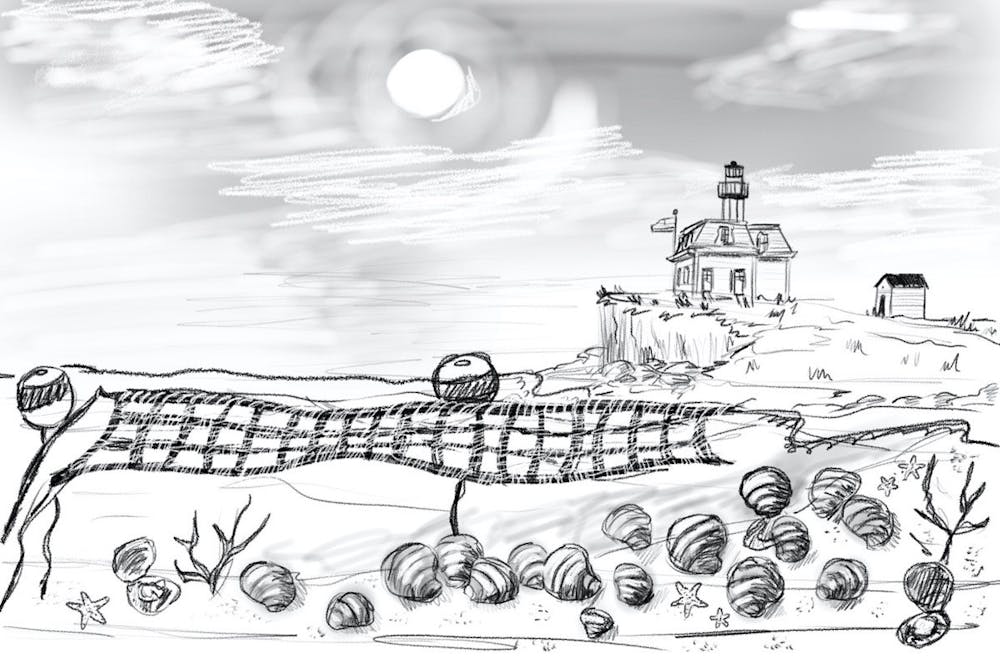A new state joint legislative commission studying the recent decrease of the Narragansett Bay’s harvested quahogs — a hardshell clam native to Rhode Island — held its second meeting Oct. 24.
The Special Legislative Commission to Study and Provide Recommendations on the Issues Relating to the Reduced Catch of Quahogs in Narragansett Bay, established earlier this year, is co-chaired by State Rep. Joseph Solomon Jr. (D-Warwick) and State Sen. Alana DiMario (D-North Kingstown, Narragansett, New Shoreham).
The commission consists of 13 members, including representatives from the Rhode Island Department of Environmental Management, the Rhode Island Shellfisherman’s Association, professors at the University of Rhode Island and Roger Williams University and industry and environmental organization members.
The commission grew out of constituent concerns earlier this year about the quahog population, according to Solomon. “We sat everybody down — from environmental management to shellfishermen (to) the University of Rhode Island — and we discussed what was going on,” he said.
“No one was 100% sure as to what was causing it,” Solomon said. “At that point, we decided that it's really necessary to create a study commission to get to the bottom of it.”
The commission’s first meeting was held on Sept. 19. At both sessions, members presented general information about the gradual quahog depletion in Narragansett Bay and research findings related to various hypotheses explaining the decline.
David Borkman, principal environmental scientist at the RIDEM’s Office of Water Resources and a Quahog Commission member, told The Herald that multiple factors are contributing to quahog depletion.
“It's easier to think in a one-dimensional model of ‘This goes in, quahogs come out,’” he said. “In reality, it's a pretty complicated ecosystem.”
The amount of nitrogen in Narragansett Bay and its relation to hypoxia — low concentrations of dissolved oxygen in the water — is one of the primary factors the commission is examining, according to Borkman. Research points to potential correlations between nitrogen concentrations and rates of hypoxia. Quahogs in the early stages of development are especially vulnerable to low-oxygen environments, he explained.
“When they’re in the water and settle, if they don’t have sufficient oxygen, they’ll die and never have time to grow into an adult, harvestable (and) edible-size quahog,” Borkman said.
Hypoxia may also help quahog populations. Quahogs are “not going to move a heck of a lot,” Borkman said. “They’re in the mud, and they can move slightly, but they’re not going to migrate away from predators.” Low concentrations of oxygen in water can reduce the number of predators searching for quahogs.
Other factors contributing to quahog depletion include climate change and warming waters, Borkman said. Warmer water temperatures have caused phytoplankton, a plant plankton and quahog food source, to be eaten by other marine life earlier in the season.
Borkman also pointed to changes in other species as another determinant in the decline of quahog populations. In particular, he noted the increasing abundance of blue crabs, which feed on smaller, fingernail-sized quahogs before they reach maturity.
Michael McGiveney, president of the R.I. Shellfisherman’s Association and a member of the Quahog Commission, noted his first-hand experiences with the quahog decline. “The lower Bay, the West Bay, places that used to be very productive for the industry are now not reproducing at all,” he said.
“We’re the canaries in the coal mine, basically,” he said, adding that people are unable to stay in the industry due to the declining quahog population. “The catch per unit effort — what the individual fisherman is catching — (is) nearly half of what it used to be.”
Save The Bay — a local environmental advocacy organization concerned with conservation in Narragansett Bay — has also been involved in the Quahog Commission, according to Narragansett Baykeeper Mike Jarbeau, Save The Bay’s representative on the commission. As part of his role as baykeeper, Jarbeau monitors environmental developments in the bay.
Jarbeau said that, as a large advocacy organization, he sees Save The Bay as bringing a general public perspective to the commission. “We care about the quahog as a traditional, important species in Rhode Island, but we also care about the health and well-being of Narragansett Bay in general,” he said.
Solomon highlighted the urgency of proactively addressing environmental issues in the bay. According to Solomon, the commission hopes to meet every two months until early next year to be able to introduce legislation on the issue before the end of the next legislative session.
“If there's something that we can do legislatively … before it becomes a major problem, then we have to because we have to preserve (the Narragansett) Bay for generations ahead,” he added.
Borkman said he hopes that the commission can create a list of short and long-term goals that can be implemented by both state agencies and other stakeholders in the fishing industry, particularly given the clam’s significance to the state.
“The quahog is iconic in Rhode Island. It’s a big part of Rhode Island culture,” and has been for centuries, he said. “It’s an important cultural symbol in addition to being an important fishery and good food.”

Tom Li is the editor-in-chief and president of The Herald's 135th editorial board. He is from Pleasanton, California and studies economics and international and public affairs. He previously served as a metro editor, covering the Health & Environment and Development & Infrastructure beats, and has worked on The Herald's copy editing, editorial page board, design and podcast teams.





